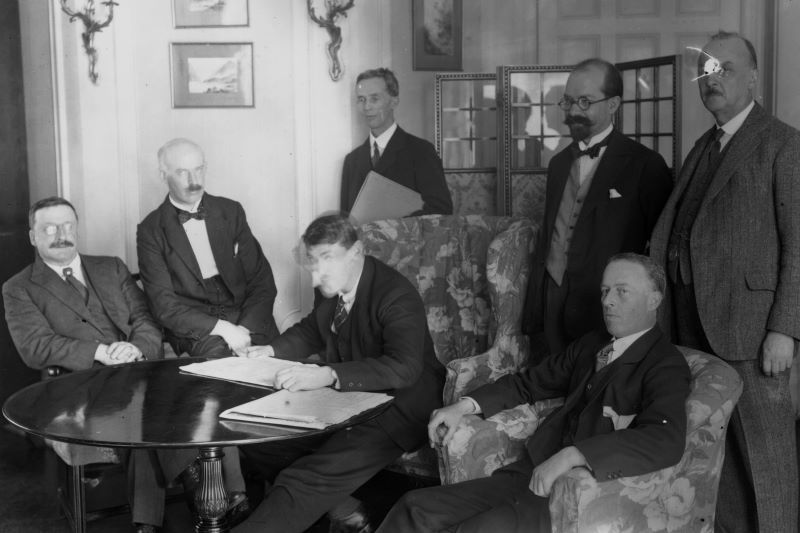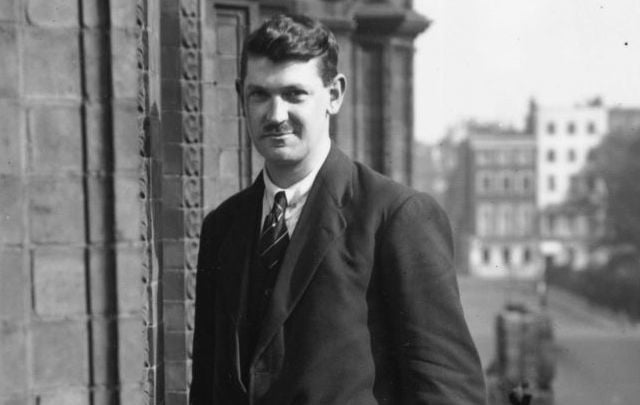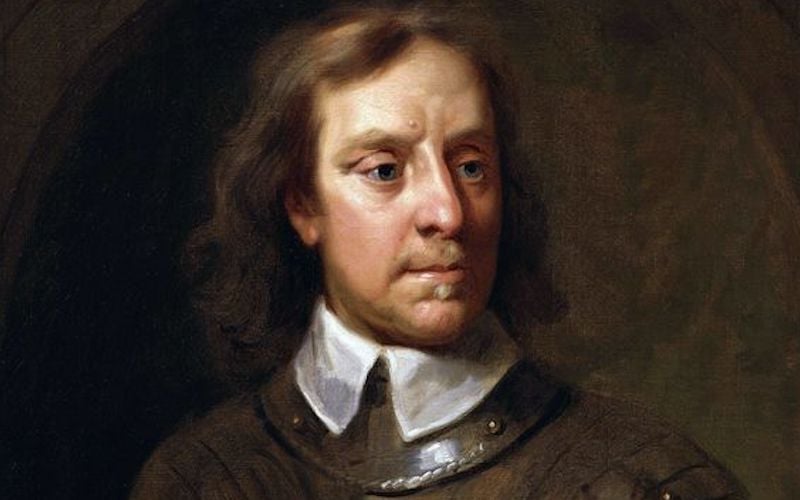On October 11, 1921, Anglo-Irish negotiations began at 10 Downing Street in London which resulted in independence for what was initially known as the Irish Free State
The original Anglo-Irish Treaty document of 1921 is available online, more than one hundred years after it was initially signed.
The 'Articles of Agreement between Great Britain and Ireland,' known simply as The Anglo-Irish Treaty, was signed December 6, 1921, at 2:12 am, marking the end of the 1919-1921 War of Independence.

View of members of the Irish delegation at the signing of the Irish Free State Treaty between Great Britain and Ireland, London, England, December 6, 1921: seated from left, Sinn Fein founder Arthur Griffith, Eamon Duggan, Irish Minister for Finance Michael Collins, and politician Robert Barton. Standing from left are author Robert Erskine Childers, lawyer George Gavan Duffy, and John Chartres. (Getty Images)
The Department of the Taoiseach donated the original document to the National Archives of Ireland in 2002.
The handwritten signatures of all of the delegates are clearly visible at the bottom of the seven-page document. The Irish delegates signed their names in Irish.
The signatures on the left of the final page include Arthur Griffith, Miceál Ó Coileáin (Michael Collins), Riobárd Bartún (Robert Barton), Eamonn S Ó Dugáin (Eamonn Duggan) and Seoirse Ghabháin Uí Dhubhthaigh (George Gavan Duffy).
Michael Collins was branded a “traitor” for signing his name to the treaty. At the time he believed it would ultimately lead to full independence.
The British delegates who signed are David Lloyd George, Austen Chamberlain, Lord Birkenhead (signed as “Birkenhead”), and Winston S Churchill.
As a result of the Treaty, the Irish Free State was created, as well as Northern Ireland which remained a part of the United Kingdom.
Upon the opening of the exhibition of the Anglo-Irish Treaty in 2011, Irish Minister for Arts Jimmy Deenihan said: “Irrespective of your political persuasions, this exhibition has no bias and no agenda.
"It is simply an excellent opportunity for the public to see, not only the Treaty itself but also the papers leading up to the signing of the Treaty.
"My hope is that this exhibition will bring to life the story of the establishment of the Irish Republic to a much wider audience than before.”
* Originally published in 2010, updated in Oct 2025.




Comments